 The
Journal of the British
Astronomical Association
The
Journal of the British
Astronomical Association
Volume 122,
No.6: 2012 December
 Summary
contents page
Summary
contents page
Detailed contents: Notes and News / Articles / Observers' Forum /
Reviews / Letters / Meetings / BAA Update


On
the cover: Brilliant Earth-grazing fireball of 2012 September 21
The September 21 fireball photographed by Thomas Heaton from Clatteringshaws Loch, Dumfries & Galloway. 30-sec exposure, ISO 800, f/3.5 on Canon EOS 5D Mk III with Sigma 10-20mm lens at 10mm. See article in ‘Notes and News’ below.
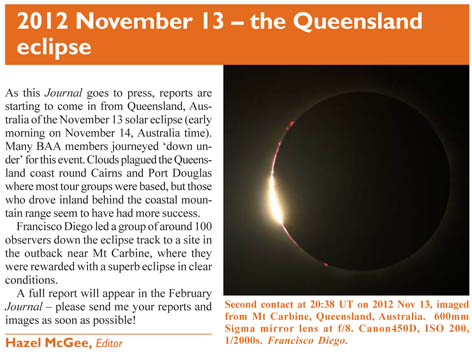
 Brilliant Earth-grazing fireball of 2012 September 21 (John W. Mason & Nick James, Meteor Section)/ From the President (Bill Leatherbarrow) / Solar Section (Lyn Smith) / 2012 Nov 13: the Queensland eclipse (Hazel McGee & Francisco Diego) / Comet prospects for 2013 (Jonathan Shanklin, Comet Section) / The 2011/2012 apparition of Saturn – interim report (Mike Foulkes, Saturn Section) / Erratum: Report of the Council 2011-2012 (Roger Pickard, Variable Star Section) / Aurora Section (Ken Kennedy) / 150-up for Tom Boles (Stewart Moore, Deep Sky Section) / ...and 100-up for Dame Kathleen Ollerenshaw!
Brilliant Earth-grazing fireball of 2012 September 21 (John W. Mason & Nick James, Meteor Section)/ From the President (Bill Leatherbarrow) / Solar Section (Lyn Smith) / 2012 Nov 13: the Queensland eclipse (Hazel McGee & Francisco Diego) / Comet prospects for 2013 (Jonathan Shanklin, Comet Section) / The 2011/2012 apparition of Saturn – interim report (Mike Foulkes, Saturn Section) / Erratum: Report of the Council 2011-2012 (Roger Pickard, Variable Star Section) / Aurora Section (Ken Kennedy) / 150-up for Tom Boles (Stewart Moore, Deep Sky Section) / ...and 100-up for Dame Kathleen Ollerenshaw!
Refereed papers
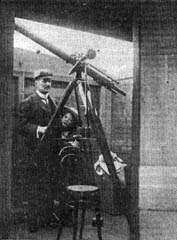

Ernest Elliott Markwick: Variable stars and military campaigns ... Jeremy Shears
Colonel E. E. Markwick, CB, CBE, FRAS (1853-1925) pursued a distinguished career in the British Army, serving in Great Britain and other parts of the Empire and rising to the rank of Colonel. He was an original member of the BAA and President between 1912 and 1914. His main observational interest was the study of variable stars, and he independently discovered two variables, RY Sgr and T Cen. He directed the BAA Variable Star Section from 1899 to 1909, organising its work along lines that are largely pursued even to this day and which other variable star organisations around the world have emulated.
A possible relationship between the recession velocity of the Martian polar caps and solar activity ... Giovanni di Giovanni
We study old and recent observations of springtime edge positions of the Martian polar caps. We present a non-polynomial mathematical function relating the angular diameter of the cap to the planet’s areocentric longitude Ls for 59 oppositions observed from Earth since 1798. We find a correlation between the springtime cap edge recession velocity and solar activity.
Eclipse comparisons of the symbiotic nova V1413 Aql from visual photometry ... Gary Poyner
Visual photometry of the 2011 eclipse of the symbiotic nova V1413 Aquilae is reported, along with a 17-year lightcurve showing intrinsic variability within the system. Comparisons between eclipses in both bright and faint ‘states’ are made, with eclipse profiles revealing something of the physical state of the hot component . Mid-eclipse timings are studied, and an eclipse ephemeris is created from a revised period of 433.5d.
Short paper: The ‘libration zones’ of Mercury: the last stand ... Richard McKim
The idea of Mercury having a captured rotation was due to direct observational evidence collected during the late 19th century by G. V. Schiaparelli. E.-M. Antoniadi came to the same conclusion by the late 1920s, and like Schiaparelli he realised that in such an instance, as with the case of the Earth’s Moon, there would be the chance of seeing a little way into the opposite hemisphere at times of favourable libration.
The orbital and superhump periods of the SU UMa-type dwarf nova V1212 Tauri
... Jeremy Shears et al.
We report CCD photometry of the superoutburst of the dwarf nova V1212 Tau obtained during 2011 January and February. The outburst amplitude was at least six magnitudes and it lasted at least twelve days. Three distinct superhump regimes were observed. Initially low amplitude superhumps (0.03 to 0.05 magnitude peak-to-peak) with Psh= 0.0782(52)d were present. The superhumps reached a maximum amplitude of 0.31 magnitudes at the beginning of the plateau phase, with Psh= 0.07031(96)d. Subsequently the star began to fade slowly. During the first part of the decline, the period increased with dPsh/dt= +1.62(9) x 10^-3 and the amplitude of the superhumps also declined. Mid way through the slow decline, the superhumps partially regrew and this point coincided with a change to a new superhump regime during which the period decreased with dPsh/dt= -1.50(39) x 10^-3. We determined the orbital period as P/orb= 0.06818(64)d and the superhump period excess as 0.034(15).
Centenaries for 2013 ... by Barry Hetherington
 Click here to obtain a PDF file of any of these articles
Click here to obtain a PDF file of any of these articles
Reviews
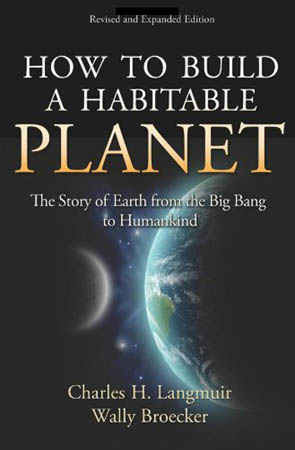

How to build a habitable planet (2nd edn.) by
Charles H. Langmuir & Wally Broeker,
Princeton University Press, 2012. ISBN 978-0691-14006-3. Pp 718+xvi, £27.95 (hbk).
 Reviewed
by David Rothery
Reviewed
by David Rothery
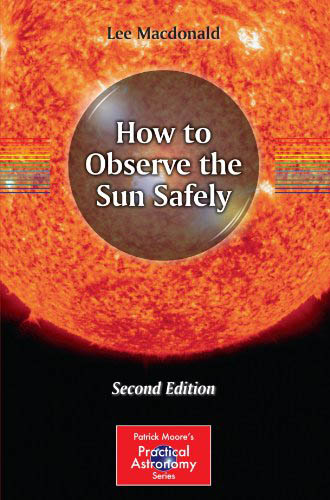

How to observe the Sun safely (2nd edn.) by
Lee Macdonald,
Springer, 2012. ISBN 978-1-4614-3824-3. Pp 214, £31.99 (pbk).
 Reviewed
by Lyn Smith
Reviewed
by Lyn Smith
CLICK HERE to read scores more authoritative book reviews from the BAA Journal
- Isolated total lunar eclipses ...
Tony West
Uncertainty in the classification of eclipses ... Peter Macdonald

BAA Update
- The BAA Awards and Medals, 2013 ...
Ron Johnson
 The BAA Winchester Weekend ... Ann Davies
The BAA Winchester Weekend ... Ann Davies
Photos of the 2012 BAA Winchester Weekend by Hazel McGee
Meetings
Why not join us at a BAA meeting near you? Meetings are open to all and you will be made very welcome. Click here for the latest
Meetings Diary
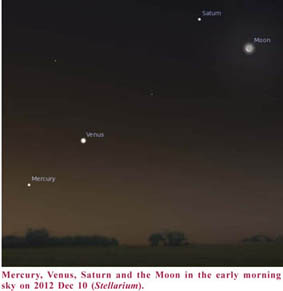

 Sky notes for 2012 December & 2013 January by Callum Potter
Sky notes for 2012 December & 2013 January by Callum Potter
Back to top of page
 Go to the BAA Journal home page
Go to the BAA Journal home page
 The
Journal of the British
Astronomical Association
The
Journal of the British
Astronomical Association The
Journal of the British
Astronomical Association
The
Journal of the British
Astronomical Association


 Brilliant Earth-grazing fireball of 2012 September 21 (John W. Mason & Nick James, Meteor Section)/ From the President (Bill Leatherbarrow) / Solar Section (Lyn Smith) / 2012 Nov 13: the Queensland eclipse (Hazel McGee & Francisco Diego) / Comet prospects for 2013 (Jonathan Shanklin, Comet Section) / The 2011/2012 apparition of Saturn – interim report (Mike Foulkes, Saturn Section) / Erratum: Report of the Council 2011-2012 (Roger Pickard, Variable Star Section) / Aurora Section (Ken Kennedy) / 150-up for Tom Boles (Stewart Moore, Deep Sky Section) / ...and 100-up for Dame Kathleen Ollerenshaw!
Brilliant Earth-grazing fireball of 2012 September 21 (John W. Mason & Nick James, Meteor Section)/ From the President (Bill Leatherbarrow) / Solar Section (Lyn Smith) / 2012 Nov 13: the Queensland eclipse (Hazel McGee & Francisco Diego) / Comet prospects for 2013 (Jonathan Shanklin, Comet Section) / The 2011/2012 apparition of Saturn – interim report (Mike Foulkes, Saturn Section) / Erratum: Report of the Council 2011-2012 (Roger Pickard, Variable Star Section) / Aurora Section (Ken Kennedy) / 150-up for Tom Boles (Stewart Moore, Deep Sky Section) / ...and 100-up for Dame Kathleen Ollerenshaw!


 Click here to obtain a PDF file of any of these articles
Click here to obtain a PDF file of any of these articles


 Reviewed
by David Rothery
Reviewed
by David Rothery

 Reviewed
by Lyn Smith
Reviewed
by Lyn Smith Letters
Letters
 The BAA Winchester Weekend ... Ann Davies
The BAA Winchester Weekend ... Ann Davies The 2012 George Alcock Memorial Lecture: Is it worth losing sleep over? ... Peter Birtwhistle
The 2012 George Alcock Memorial Lecture: Is it worth losing sleep over? ... Peter Birtwhistle Conjunction of Uranus with 44 Psc, 2012 September 22/23 ... John Vetterlein
Conjunction of Uranus with 44 Psc, 2012 September 22/23 ... John Vetterlein

 Sky notes for 2012 December & 2013 January by Callum Potter
Sky notes for 2012 December & 2013 January by Callum Potter